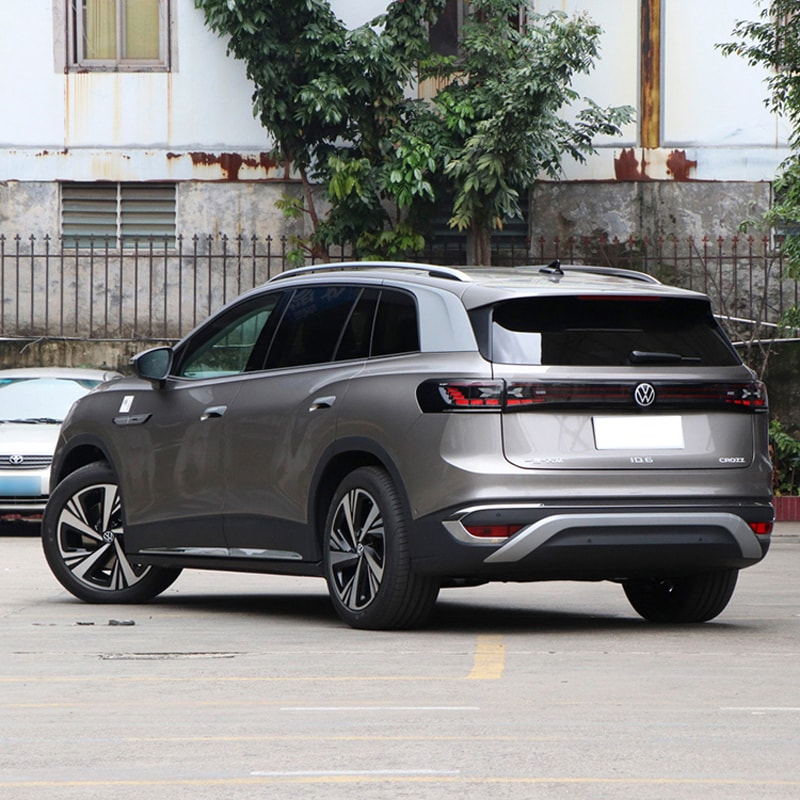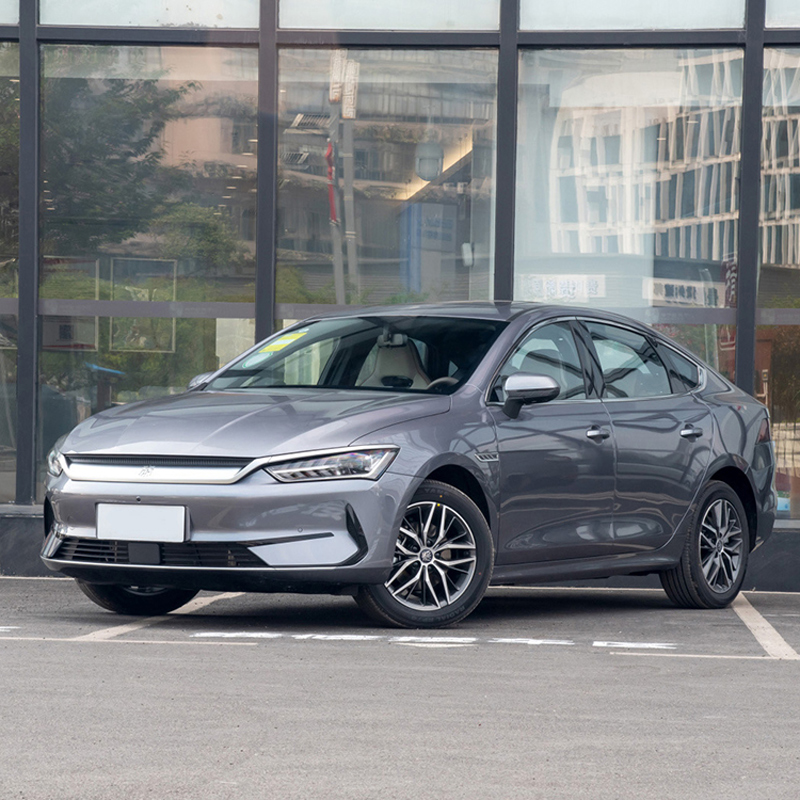Electric Car Maker Karma Comes Back…Again
After several years of stops and starts, the futuristic American automaker introduces two new cars that are full of promise—and pivotal to its survival. China Self Charging Hybrid Factory

I’m sitting under a tent in the parking lot at Las Vegas’ Allegiant Stadium listening to William Monroe, the head of sales and marketing at Karma Automotive. If you’re not a car buff and haven’t heard of Karma, you’re not alone, but bear with me—we’ll get to all that.
“There’ve been a lot of changes at Karma in the past seven months” since the arrival of new CEO Marques McCammon, Monroe admits. “The company is at a critical juncture.” That’s why the car that McCammon and his colleagues are about to show us—have brought us to Las Vegas to see—is so important.
LifestyleBrian Merchant’s Obsession With Technological Dystopias January 11, 2024 In his book, "Blood and the Machine," Merchant jogs our memory of past technological upheavals in an attempt to arm us for the tyrannical change he foresees.
In his book, "Blood and the Machine," Merchant jogs our memory of past technological upheavals in an attempt to arm us for the tyrannical change he foresees.
Monroe’s not saying anything that I and the other ten or so car writers on hand don’t know. Karma, which is almost a decade old now, has a lot riding on this unnamed car. No one’s going to come out and say that it’s a make-or-break car for the company, but you can’t rule it out.
Some history first. Karma is the descendant of last decade’s pioneering independent auto company Fisker Automotive, maker of a hybrid electric car released in 2011 called the Fisker Karma. The Karma was an imperfect car, but it was gorgeous, long, and sleek and looking like something you might find in James Bond’s garage, and that was part of the point. “Environmentally friendly cars really were terrible-looking cars that nobody was interested to buy,” founder and designer Henrik Fisker, who envisioned his car as a competitor to Tesla, told Worth in 2017. “My idea with the Fisker Karma was to show that you can design an absolutely stunning and beautiful vehicle that’s also environmentally friendly.”
Stanford environmental engineering professor Mark Z. Jacobson believes that wind, water, and solar power are enough to save the climate—if our leaders are willing to use them.
But management failures and quality control doomed Fisker Automotive, which declared bankruptcy in 2013. Henrik Fisker went on to start another eponymous car company. Karma—the company, not the car—came to life in 2014, when a Chinese auto parts supplier called Wangian Group bought what was left of Fisker, including the name of the car it had made. In 2017, the refashioned Karma, now based in southern California, introduced the Karma Revero, which was basically a spruced-up version of the Fisker Karma and felt a little behind the curve even when it was introduced. The car sold…eh. Not well. (Put it this way: Have you ever seen one?) And in the years following, Karma didn’t move the ball much, tweaking the Revero in small but not game-changing ways. As Jeff Zurschmeide, one of the journalists on hand for the Las Vegas event, rather pointedly said to Karma spokesperson Jeff Green, Karma sold four cars this September, and one car in October. Why should anyone think this will be different?
In other words…yes, indeed, Karma is at a critical juncture. It needs a hit.
And then, as Michelle Christensen, who designed the legendary 2016 Acura NSX, and runs the company’s design team, was talking, Karma CEO Marques McCammon pulled up in the car. Not “pulled up,” really. More like, raced up silently from behind the closed tent and whispered to a dramatically quick stop right next to us . Dressed, like all the Karma personnel present, in a black suit, white shirt, and white shoes, McCallum opened the car’s scissor door, stepped out, and let us take it all in.
“This is the beginning of a new journey for Karma,” McCammon announced.
Indigenous communities play a critical role in the 'REDD+' strategy that sells emission reductions for credits to raise money for forest protection.
He’s not wrong. The new Karma Kaveya—more on that name in a second—does have a few similarities to the Revero. It’s low and sleek and has the passenger compartment “as far rearward as possible,” according to designer Christenson, “indicative of high performance and luxury.”
But in other ways, the Kaveya—the name is a modification of the Hindi word “kavya,” one meaning of which is “poem,” and is meant to suggest “power,” as in, “power in motion,” and trust me, Karma will get that story down before too long—is strikingly different from its predecessor. While the Revero is plenty fast, the two-seater Kaveya looks like a speed demon, with fewer long, swooping curves and more angles. If you pressed me, I’d say it looks more like a Japanese supercar than, say, the British Aston Martin sensibility that the Revero slightly resembles. Its undercarriage hovers just above the ground—I’m not sure you’d want to go over a speed bump in the Kaveya—and there’s something almost predatory about its minimalist form. Everything on this car is supposed to be hidden, part of what gives the Kaveya its sci-fi look. The headlights pop out of receding panels in the front; the wiper blades are hidden behind a retracting panel; the rear spoiler emerges like an F-16 at low altitude. It’s part of what Christenson called “seamless fluidity,” adding that “we’ve hidden all the technology and moving parts until you need them.” Indeed, if there’s anything on the dashboard that moves other than the yoke steering wheel, I didn’t see it.
Vermont, Austria, India? The location of the ideal ski slopes may surprise you. These are the top U.S. and international spots to visit this winter.
And the Kaveya, which is fully electric, is fast. The top-of-the-line, all-wheel drive version has a combined 1180 horsepower and can sprint from 0 to 60 in under three seconds—faster than any of us typically need to go, but not best in class. It has a range of 250 miles, which is solid but also not best-in-class—it’s not entirely comparable, but Henrik Fisker’s forthcoming SUV, the Fisker Ocean, has an estimated 360-mile range— and can change from 10% to 80%, Karma says, in about 45 minutes. (About other data, like top speed and price, Karma is less certain.) The Kaveya, Christenson says, “was inspired by high fashion, space exploration, science and technology.” As if to reinforce the point, the interior seats on this prototype—the first fully functioning prototype of the Kaveya—are lined with a smooth, almost quilted fabric that is supposed to suggest a spacesuit. Instead of a standard seatbelt, the seats have a five-point harness that most of the writers on hand would need professional help attaching. Get the message? This car is fast.
I have no idea if the new design aesthetic has anything to do with this, but it’s worth noting that Karma is conspicuously targeting a specific cohort of buyers: rich Black people. CEO McCammon and marketing director Monroe are both Black, and the company also brought in a consultant named Michael Berrin to reach out to Black entertainers and athletes. If the name doesn’t ring a bell, that may be because Berrin, a founding member of the late-‘80s rap group 3rd Bass, was once best known as MC Serch, and after he quit performing, he became a talk radio host on urban radio in Detroit, a music producer, and founder of a marketing and promotions company called Serchlite. “Michael can introduce us to a lot of folks we might not otherwise meet,” one Karma employee told me. “At Karma, we believe that our job is to be the reflection of the client,” McCassum said. The type of client he had in mind? Venus Williams and Michael Jordan. The approach feels like both a welcome and a smart move for Karma, a sign of the growing power of Black wealth and a recognition that this group of consumers has been an underappreciated market in the past.
Lengishu, the stunning safari lodge in northern Kenya, overlooks “Pride Rock” and is the perfect bucket-list adventure for families who want to protect it.
How does the Kaveya drive? I wish I could tell you, but we weren’t allowed to drive the car, because Karma has only prototypes—the Kaveya isn’t expected to go into production until the 4 th quarter of 2025, for sale in 2026. (Though for $10,000, you can reserve one now .) You wouldn’t want to damage the merchandise when the supply of it is extremely limited.
Instead, a professional driver took us one by one through a short course that had been laid out in the stadium parking lot. Within that tantalizingly brief context, the Kaveya accelerated fast enough to throw you back in your seat, turned tightly, and braked decisively. Sitting in the passenger seat of the Kaveya was fun, but it looked like a lot more fun to sit in the driver’s seat.
It’s no secret, McCammon admitted, that Karma’s journey has had its share of fits and starts. “It is what it is,” he acknowledged. Now, though, Karma wants to be “the embodiment of American luxury, America’s quintessential luxury brand.”
I don’t know if they’ll succeed. But I wouldn’t rule it out.
In addition to the Kaveya, Karma is also introducing the Gyesera, a four-door car that resembles the Revero but is fully electric. For more information on both the Kaveya and the Gyesera, visit karmaautomotive.com.
Oscar Munoz, former CEO of United Airlines, sheds light on key moments and mentors that have defined his approach to business and leadership.
The projected $68 trillion wealth transfer from Baby Boomers to Millennials could be smaller, and arrive in unconventional forms.
Working from home can cut your employment-related carbon footprint by more than half, a study found.
High-profile theft and lower downtown populations are problems bigger than individual retailers, and solutions will have to be bigger than them too.
"* " indicates required fields

Electric And Gas Cars 2023 Worth Media Group. All rights reserved.